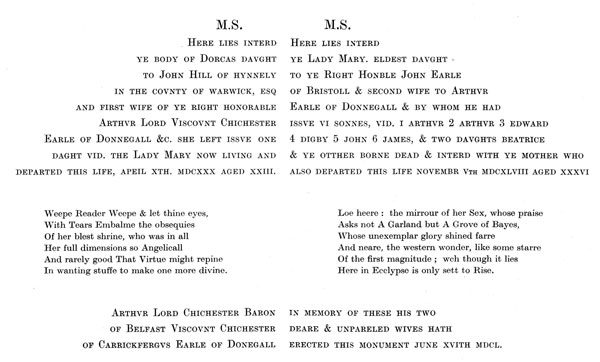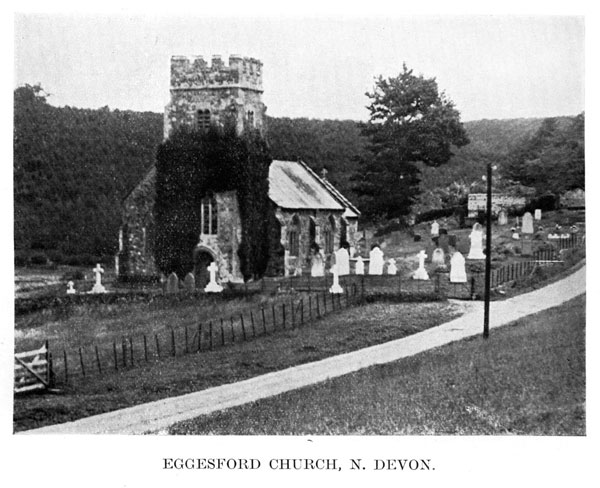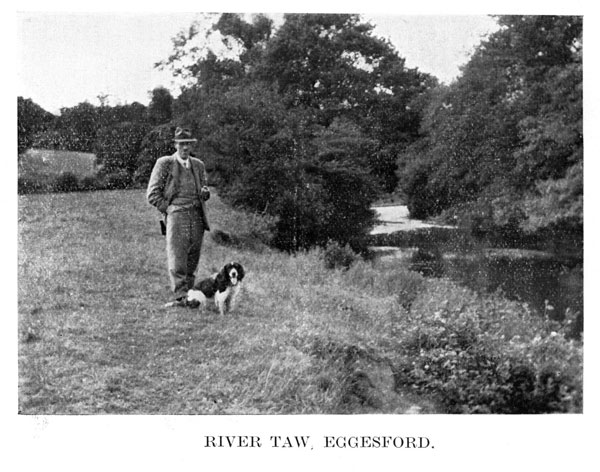ARTHUR, 1st EARL OF DONEGALL.
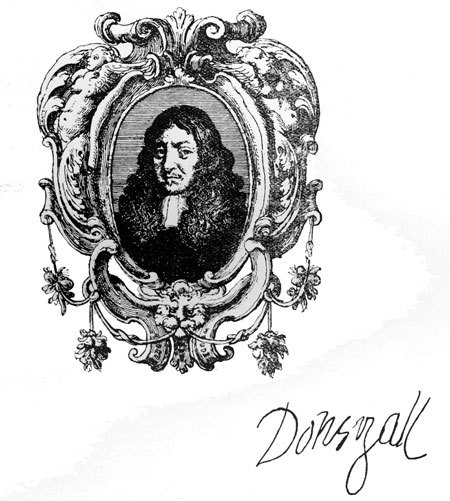
Colonel Arthur Chichester was the eldest son and heir of Edward, Viscount Chichester, younger brother of Sir Arthur, Baron of Belfast, Lord Deputy of Ireland. His mother was Anne, only daughter of John Copleston, of Eggesford, in the County of Devon. Born 16th June, 1606, he adopted a military life and became intimately associated with James Butler, afterwards 1st Duke of Ormond. On the breaking out of the Rebellion in 1641, he raised a Regiment of Foot and another of Horse for the service of the Crown, at his own charge. He was appointed Governor of Belfast by Charles I.
"Rt Trusty & well beloved Counsellor We Greet you well beinge fully satisfied of the Loyalty & affection of our truly & well beloved Colonel Arthur Chichester & also of his good abilities to doo us service."
"We are resolved to intrust him with the Governor of our Towne of Belfast in the County of Antrim & of the Territory of Enishowen in our County of Donegall in that our Kingdome of Ireland & doe therefore humbly require & command you that you forthwith cause a Commission to be passed under the Great Seal of that our Kingdome & to be delivered to the said Arthur Chichester constituting him Governor of our said Towne of Belfast & Territorie of Inishowen with all profits.
"£1,000 to be advanced to him.
"Given under our Signett at our Court at Oxford this 31st day of October, 1643."
On 19th June, 1645, James, Marquis of Ormond, wrote the following letter to Charles I :--
"Your Majesty has been graciously pleased to reward some that either served your Majesty actually, or suffered for you eminently in their persons or fortunes, with new creations or with additions of honour in this kingdom. That Colonel Chichester hath missed such a mark of your favour I conceive to have been through his own modesty, and my not representing his personal merit. If he outlives his father, he will be among the foremost of the Viscounts of this kingdom in place, and I am sure beyond them all, except one, in fortune, though he be for the present deprived of the latter for his faithfulness to your Majesty's crown, the same means whereby his uncle got both it and his honour. He hath served your Majesty against the Irish Rebellion since the beginning of it; and, when, through an almost general defection of the northern army, he was no longer able to serve your Majesty there, he came with much hazard to take his share of the sufferings of your servants here, and with them attend for the happy time that we trust will put us in a condition to contribute more to the service than our prayers. If your Majesty shall think fit to advance this gentleman to an Earldom I conceive that of Dunnegall, a country in the province of Ulster, wherein he should have a good inheritance, is fittest."
The King, acting on the advice of the Lord Lieutenant, raised Colonel Arthur Chichester to the Peerage, as Earl of Donegall, by Privy Seal, dated at Newcastle, 15th January, 1647, and by Patent, at Dublin, bearing date 30th March, 1647. The King's instructions for the Patent were :--
"Right trustie & right-entirely beloved Cousin & Counsellor We greet you well. We, having received real testimony of the faithfulness & good affection of our trustie & well beloved Arthur Chichester Esq., son & Heir Apparent of Edward, Lord Viscount Chichester & one of our privy Council of that our Kingdom & being very sensible of the great lossess & sufferings which he hath sustained in his person & estate by reason thereof, & that we cannot pass over his services unrewarded to advance him, the said Arthur Chichester, unto the Title & Dignity of Earl of Donegall, in that our Kingdome & do therefore hereby will & require you to constitute & create him, the said Arthur Chichester, by effectual Letters Patent, Earl of Donegall, with all the rights, pxivileges, & Immunities unto such Title or Honor belonging & such creation monie as in such cases is usual or hath been accustomably granted.
"To HAVE & TO HOLD the same to the said Arthur Chichester & the Heirs Male of the body begotten & for want of such Heires to the Heires Male begotten, or to be begotten, of the Body of the said Edward, Viscount Chichester, & for so doing this shall be your Warrant.
"Given at our Court at New Castle the fifteenth of January, one thousand six hundred & forty six 1646."
The date, January, 1646, was the old reckoning, so that the Patent, bearing date 30th March, 1647, was issued within three months after the King's Command.
The Earrs uncle, Sir Arthur Chichester, Lord Deputy, had been created Baron of Belfast, by Patent, bearing date 1612, when James I. wrote to him as follows :--
"As at first you were called by your election, without seeking for it, to this high place of trust and government of our kingdom of Ireland, and have so faithfully discharged the duties thereof, that, without any desire of yours on that behalf, we have thought fit to continue you in that employment these many years, beyond the example and custom of former times; so now we are pleased, merely of our own grace, without any mediation of friends, without your suit or ambition, to advance you to the state of a Baron of that Kingdom, in acknowledgment of your many acceptable services performed unto us; and that you and all ministers of state, which serve us wheresoever, may know, by the many instances of this our favour to you, that we observe and discern their merits, and accordingly do value and reward them."
It was in recognition of these honours being conferred "merely of our own grace", that the family motto was adopted --
Invitum sequitur honos.
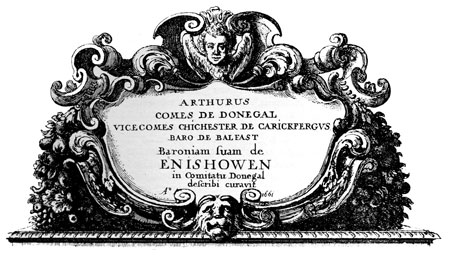
It is not, however, with the public life of Colonel Chichester that we are so much concerned as with his intimate association with the people of Belfast, among whom he lived and in whose welfare he evinced, at all times, the deepest interest. He was a man of high refinement, particularly interested in Education and Art, and using every available opportunity to preserve and improve the amenities of the town as well as to beautify the Castle Gardens.
For the first twelve years after the Earl had inherited the Donegall estates, limited by tail male, the country was in an unsettled condition and Belfast, during a portion of the time, in a very disturbed state. But shortly after the Restoration, Charles II issued a Declaration which, inter alia, contained the following :--
"If the general distraction and confusion which is spread over the whole Kingdom doth not awaken all men to a desire and longing that those wounds which have so many years together been kept bleeding may be bound up all we can say will be to no purpose. However after this long silence we have thought it our duty to declare how much we desire to contribute thereunto, and that as we can never give over the hope in good time to obtaine the possession of that Rt which God and nature hath made our due, so wee doe make it our dayly suit to ye divine Providenee that Hee will in eompassion to us and our subjects, after so long misery and sufferings committ and putt us into a quiet and Peaceable possession of that our Right with so little blood and damage to our people as is possible. Nor doe wee desire more to enjoy what is ours than that all our subjects may enjoy what by Law is theirs by a full and entire administration of Justice throughout the Land and by extending our mercy where it is wanted and deserved.
"And to ye end that the fear of punishment may not engage any conscious to themselves of what is passed to a p'severance in guilt for the future by opposing the quiet and happiness of their Country in the Restoration both of Kings, Peers, and People to their Just, Ancient, and Fundamentall Rights wee doe by these presents declare that wee doe grant a Free and Generall pardon which wee are ready upon demand to pass under our Great Seal of England to all our subjects of what degree or quallity soever, who, within fourty days after the publishing hereof, shall lay hold upon this our grace and favour and shall, by any publick act, declare their doeing so. And that they retourn to the Loyalty and obedience of good Subjects (excepting onely such persons as shall hereafter be excepted by Parliamt) those only excepted. Lett all our loveing subjects how faulty soever relie upon ye word of a Kinge solemnly given by this present declaracon that noe crime whatsoever committed against us or our Royal Father before the publication of this shall ever rise in Judgment or be brought in question against any of them in the least endamagement of them, either in their Lives, Liberties, or Estates or (as far forth as lies in our power) so much as to the prejudice of their Reputations by any Reproch of term of distinction from ye rest of our best subjects wee desireing and ordaining that henceforward all notes, discord, separation, and difference of Parties be utterly abolished among all our subjects whom wee invite and conjure to a perfect union among themselves under our protection for ye resettlement of our Just Rights and theirs in a free Parliamt by which, upon the word of a Kinge, wee will be advised.
"And because the Passion and uncharitableness of the times have produced severall opinions in Religion by which men are engaged in Parties and animosities against each other which, when they shall hereafter unite in a freedom of conversation, will be composed or better understood, wee doe declare a Liberty to tender Consciences, and that no man shall be disquieted or call in question for differences of opinion in religion which doe not disturbe the peace of the Kingdom. And that wee shall be ready to consent to such an Act of Parliament as upon mature deleberation shall be offred to us for ye full granting that indullgence.
"And wee doe further declare that wee will be ready to consent to any Act or Acts of Parliament to ye Purposes afforesaid and for ye full satisfaction of all arrears due to ye officers and ye Souldiers of ye Army under ye command of Generall Monck and that they shall be retained in our service upon as good pay and conditions as they now enjoy.
"Given under our Sign Manual and Privy Signet at our Court
at Breda this 1/14th day of April, 1660 in the twelfth year
of our Reign."
After the establishment of the Commonwealth the Oath taken by the Sovereign, Thomas Hanington, on Michaelmas, 1650, and again in 1651, contained the following :--
"You shall acknowledge the power and authoritye of the Parliamt of England and Governemt by States to bee just, honourable, and lawfull and shall to the uttermost of yor power maintaine and uphould all the rightes, libtyes, Interests, and privileidges of the same.
"You shall alsoe to the uttermost of yor power see the peace of the Comon wealth of England and Ireland well and faithfully p'served and kept, both in yor owne person and in all other person & persons whatsoever wthin yor jurisdiccon and libertyes.
"You shall see equal justice done as well to the poore as to the Riche dureinge the tyme of yor office accordinge to yor power, skill and understandinge."
The above oath indicated a true allegiance to "the power and authoritye of the Parliamt" But once the Royal Declaration of 1660 had been issued from Breda, several of the Burgesses :--
"make claime to ye benefit of ye esceeding great grace and Mercy held out by his most excellent Majesty Charles ye Second by ye Grace of God, Kinge of England, Scotland, France, and Ireland, defender of ye Faith, &c., to all his loving subjects by a declaracon under his signe Manual and privy signett, at Jlis Court at Breda 1/14th of Aprill, 1660, and in ye 12th yeare of his Majestys Reigne and sent to ye Houses of Peers and Comons in England and Published by order of ye first of May 1660 and doe with thankefullnesse and Joy of hart lay hould, embrace, and accept of his Majestys Grace and favour offered therein and doe humbly pray the benefitt thereof. And that this, my prayer, and acceptance, may be recorded as a publique Act of mine and entred amongst the Records of this Court. And likewise doe owne and acknowledge his Majestie to be Soveraigne Lord and Kinge and Promise to yeald all constant and faithfull obedience to his Majesty. As witness my hand.
"Acknowledged before Capt Francis Meeke
Soveraigne of this Borrough and Entred
per Robt Leathes Towne Clk."
Another indication of the loyalty of the Burgesses is to be found in the verses presented to the Lord Lieutenant of Ireland, General Monck, Duke of Albemarle :--
| 1660 | "Advance George Monck & Monck St George shall be Englands Restorer to Its Liberty, Scotlands Protector, Irelands President, Reduceing all to a Free Parliamt. And if thou dost intend the other thinge Goe on and all shall Crye God save ye Kinge." |
-- -- -- -- -- -- -- -- -- -- --
| R | R | doth Rebellion Represent |
| V | by V | nought els but Villainyes is meant |
| M | M | Murther signifyes all men doe knowe |
| P | P | Perjuryes in Fashion growe. Thus R and V with M & P conjoyn'd make up our miserie." |
For some time after the Earl had inherited the Donegall Estates there seems to have been a hiatus in the administrative powers of the Burgesses, probably due to "these troublesome tymes". At an Assembly, held on 17th October, 1667, "severall good and wholesome Acts, orders, and By-laws", formulated so far back as 1635, were confirmed, and subsequently several new Bye-laws were adopted "with ye consent of Arthur, Lord Viscount Chichester of Carrickfergus and Earle of Donegall (Lord of ye Castle of Belfast aforesaid)."
It is recorded on 24th June, 1660 :--
"That no Burgess of ye said Borrough, from and after ye date hereof, that is or shall bee ellected and sworne Sofferaigne of ye Borrough aforesaid; dureing the time of his Soveraigneship, shall sell by retaile in his house any Wines, of what kinde soever, or any Beer, Ale, or Aquavite, or keep entertainemt in his house dureing his office afforesaid, upon paine of one hundred pound to he levied upon his goods or chattles to and for ye use of ye Corporacon and ye said Burgesse soe offending to be disfranchised of his Burgesssp.
"Fra Meeke Sufraine
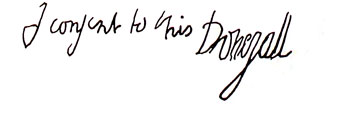
The Burgesses next turned their attention to the cleanliness of the town, and it is recorded on 7th January, 1663 :--
"That whereas dayly complaintes is made by severall Inhabitants of the said Borrough that great anoyance is comitted by the Butchers of the Towne by killing and slaughtering of Catle they suffer the Blood and Garbage of their slaughter houses, some to lye in ye streets & other parte to run into severall channells and ditches of this Towne, to the corruption and putrefaccon of the River and annoyance of their neighbours by reason of the stinke and evill and infectious smell (that if not timely prevented) will by all likelyhood bringe soem Ruinous and pestellentiall desease amongst ye Inhabitants, which for the future that care may be taken and such enormityes cured. It is ordered and by and with the consent afforesd it is hereby enacted that if any Butcher or Butchers, or any other person whatsoever, shall, from and after the date hereof, slaughter or kill, or cause to be slaughtered or killed, any catle, of what kind soever, within this Towne of Belfast, without they or any of them soe doing shall carry, or cause to be carryed, the same day, all ye Blood and Garbage of such beasts or catle soe killed or slaughtered twenty yard beyon ye full sea marke, every such Butcher... shall, for every offence, pay twenty shillings sterling, to be levied imediatly by distresse or otherwise as is accustomed to &c."
"Geo McCartney Sovraigne."
That Bye-law is all the more significant when we bear in mind that, during the regime of the 1st Earl (1648-1675) twenty-three Butchers, in addition to those already established, were "admitted a Free Commoner of the Towne and sworne according to the ancient use and custom". That they were not natives may be seen from their patronymic :--
"Edward Dam: David Longe: George Williamson: Arthur Houghton: Richard Saltus: Stephen Clarke: Edmund Baley: John Whitlock the younger: John Nichollson: Ralph Pitt: Isreall Christian: William Williamson: John Horner: John Porter: Hugh Brierly: Tho Roads: William Oakes: Ric. Bourne: Vallintine Herone: George Willis: Richard Curle: Henry Williamson: Thomas Leathes."
Upon the founding of the Corporation the butchers consented to a Bye-law that upon being made free they should pay weekly "unto the Soveraigne for the tyme being one toung towards the Soveraignes hospitaletie ". In 1632 four Butchers -- Robte Duninge: Tho. Duninge: Ralph Dyson: and William Wilson the younger -- disputed the tax and the matter was left to John Wassher who certified :--
"I doe therefore Order and Award that the said fower Butchers shall paie unto the said Lewis Tomson no we Soveraigne for this p'sent yeere twentie tounge apice in satisfacon of all the toungs arrearange or growing due unto the Soveraigne wch the said Soveraigne shall accept of in full paimt and satisfaccon for this p'sent yeere. And that the said Butchers and everie of them after the expiration of this yeere shall paie unto the next succeedinge Soveraigne yeerelie one toung weekelie and everye weeke soe long and soe often as he or they respectivlie shall kill anie beef or beeves."
In conjunction with the slaughtering of cattle there was established the important industry of tanning, and during the same period (1648-1675) the following Tanners, thirteen in number, were admitted as Free Commoners :--
Daniel Christian [probably a relation of Israel, the butcher]: Henry Hoole: John Manken: Thomas Whittley, late apprentice to Mr. Thomas Warring: Alexander Arthur: Hugh Bigger: William Martin ye sonn of George Martin Burgesse :* John Elsh of Glenavy: John Roads: John Moore, sworn gratis, having served his time with Tho: Waring Esq.: Richard Workeman, sworne gratis, having served his prenticeship wth Joseph Whitlocke deceased.
* George Martin gent. was elected a Burgess in place of Henry Le Squyre on 30th October, 1645; Sovereign in 1649; and died in 1678.
The following Deed of Apprenticeship, dated 30th November, 1648, shews that the trade of tanning was regarded as an important branch of industry when such a lengthened document was prepared between two brothers.
"Thomas Rigbye sonne of Richard Rigbye, late of Clough Castle wtin the parish of Belfast aforesaid husbandman deceased came before the said Sovraigne and of his own Accord and free will and by and wt the consent, assent, and good likeinge of all his friends and kinsfolke then being and liveinge wtin the said Towne of Belfast aforesaid Tanner, his brother, for the full Terme, tyme, and space of seaven whole yeares fully to bee compleat & ended, three years of wc said Terme the said John Rigbye acknowledgeth were ended att and upon the first day of Novembr last past before the date hereof and were well and faithfully served and imployed in the Service of the saide John Rigbye, his said Master, and by him acknowledged and taken to bee part of the said Thomas Rigbye his apprenticeship."
The apprentice then enters into many obligations, such as :--
"... shall not haunt, use, frequent, or otherwise pracktise anie unlawfull games, comon alehouse, Tavernes, bawdye houses, or any evil, lewd, or dishonest companie to the loss, prejudice, or hinderance of his saide master nor by any meanes, or by or uppon occasion of his owne absent or wtdrawe himself out of or from the worke, labour, service, or businesses of his said Master, by day or by night, wtout the license, libtye, or privileidge of his said Master.
"The Secretes and Counsell of his saide Master lawfull, juste, and honest, dureing the said Terme, hee shall well and faithfully keepe, secrete, and conceal.
"Matrimonie he shall not contract dureing the said term.
"Shall and will from tyme to tyme and at all tymes hereafter dureing the said Terme order, behave, rule, govern, and behave himself towards the said Thomas Rigbye, his said Master, in all things as an obedient, just, true, and faith full Apprentice and covennt servant ought to doe and behave himself."
On the other hand the Master also binds himself to obligations :--
"In cousideracon of wch said dutye, obedience, good and civil behaviour, and faithful service in manner and forme as aforesaid... the said John Rigbye... doth covenant, promise, and grant... that hee the said John Rigbye shall and will at all and evrye tyme and tymes hereafter, and from tyme to tyme during the said Terme, instructe, teach, and informe... Thomas Rigbye, his said Apprentice, as well in the arte, trade, craft, science, misterye, and occupacon of a Tanner, as also in all other artes, trades, crafts, sciences, misteryes, and occupacons wc the said John Rigbye, his said Master, now useth, exerciseth, or pracktiseth... dureing the said terme as well in the best sort, maner, and forme as the said John Rigbye... can instructe, teach, and informe by his diligent instruction and information and as the capacity and understandinge of the said Thomas Rigbye can or may attaine unto.
"And alsoe that hee, the said John Rigbye... shall well and truely pay... unto the said Thomas Rigbye, his Apprentice and Covenant servant the some of twentye six shillings sterl yearely dureing the said Terme and alsoe shall give and allowe his said Apprentice the Tannery of half a deacre of Leather evrye yeare dureing the said Terme towards the mantennce of him the said Thomas Rigbyec wt apparrell and other necessaryes.
"That the said John Rigbye his Executors or adminrs shall well and truely paye or cause to bee paid unto the said Thomas Rigbye the some of five pounds sterl in money or comodityes at the end and expiracon of his said Terme of Apprentishippe."
One naturally asks why was such a comparatively unimportant though verbose, document copied into the Corporate Records? An office for the registration of deeds and other documents was of much later date and having a copy inserted in the Corporate Records was the only method of registering such documents, or even statements of fact, as were regarded of sufficient importance to be preserved.
The Burgesses next directed their attention to the banks of the river and to the bridges that spanned the Farset in High Street. At an Assembly, held on 7th January, 1663,
"It is ordered that every person shall build up or cause to be builded up and topt ye bankes of ye River of this Towne of Bellfast with brick or stone and lime above ye streets or Pavemts such hight as some parte of ye said Riverwall is all ready made and ye same to be compleated and finished before the last day of June next ensueing ye date hereof and every person or persons that is or shall be concerned to build up ye Banke of ye said River and that shall neglect or refuse soe to doe shall pay ten shills ster for every offence to be imediatly levyed by distresse or otherwise as is accustomed &c.
"George MeCartney Sovraigne."
The Earl's benefactions towards Education were an outstanding characteristic. He established a Classical School at Belfast of which Benn says:--
"No information is known informing us of the exact spot on which the school house stood, but in the map of 1685 there is a considerable building at the Ann Street corner and within the yard which must be the place."
Benn, however, was not aware of Maclanachan's Map of 1715, which shows clearly that there was a building in the south end of "church yeard" at the rere of the Corporation Church. That the building thus depicted by Maclanachan was the Classical School is confirmed by the parcels of a Donegall lease, bearing date 26th March, 1713 :--
"one plot of ground adjoining to the School House of Belfast and bounded on the N by the said School House and on the S by the road or street leading to the Long Bridge of Belfast and fronting to the Lane called Schoolhouse Lane, being in front 53 feet and extending backwards 65 feet."
In a Mortgage, dated 26th August, 1726, there is recited a Donegall lease of 3rd January, 1692, to R Leathes and Lewis Thompson for 61 years at 18 shillings per annum:
"all that parcel of strand ground and lands containing in front to Schoolhouse Lane 52 feet and extending backwards to the range or straight line of the E side of the Storehouse and strand of George Macartney and Lewis Thompson."
We thus see that two Donegall leases confirm Maclanachan's position of the Schoolhouse and that Phillips, by placing "a considerable building at Ann Street corner" was in error, and so misled Benn. But in his anonymous History of 1823, Benn reproduced Thompson's engraving, entitled "The Chapel of Ease", and made no reference to the Classical School which appears at the back of the Church Yard. That building could not have been the National School, which, as stated on a mural tablet, was erected and opened for the reception of children on 8th January, 1834; and re-opened in 1885 during the ministry of the late Canon Hugh Davies Murphy, A.M., D.D.
As to the date of erection of the School House we get an indication in the Family Roll :--
| 1666 | "Paid the masons and carpenters for working at the School House in the Church Yard." |
| do. | "Paid for 41,000 Bricks used at the School." |
| do. | "Paid Mr. Waring £52 for timber for the School House and £1 15s. 0d. for slates to finish the School House." |
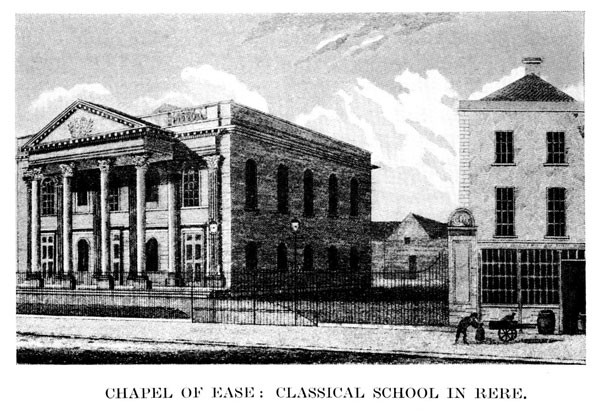
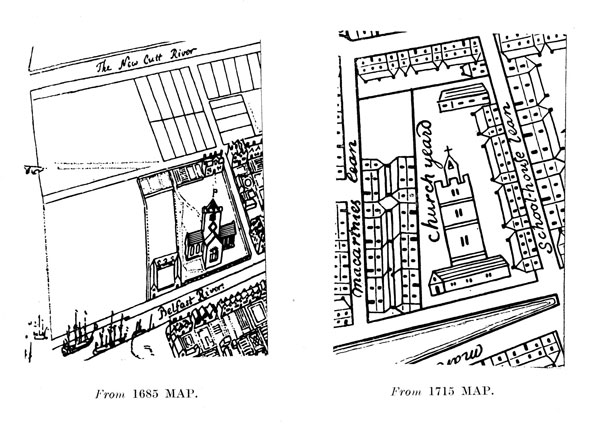
We learn from another source that the Schoolmaster was "passing rich with forty pounds a year". In the Donegall Journal of Disbursements the following items appear :--
| 1706 | "Paid Pierce Collingwood on Account of his Salary as Master of the Free School of Belfast £20." |
| 1709 | "Mr. Pierce Collingwood's Salary as Teacher £20 -- 1/2 year." |
The salary, estimated in present-day currency, was not excessive. But we must remember that the wage of a labourer was, at the time, 7d. per day, as the following items show :--
| 1706 | "Paid John Seaton for a day's work in mending Crumock Bridge 7d." |
| 1708 | "Paid Alexander Henderson, Labourer, for 4 days' woork about the Castle 28d." |
Although the Classical School was not built until after the Restoration, the matter of "the educacon & bringinge upp of youth wth this Toune" had been under consideration shortly before the execution of Charles I, as may be seen from the Corporate Records :--
"The 11th of Januar, 1648.
"At the Courte of Assembly houlden the daye and yeare aforesaid It is agreed uppon by the generall consent of the Sovraigne and Burgesses then p'sent that there shalbee a constant yearely stipend of XII sterl allowed by the saide Toune for the myntenence of a schole master for the educacon & bringinge upp of youth w'in this Toune and meanes made for a convenient howse to teach in and that for the raiseing of the said yearely stipend of XII and the meanes for the dwelling howse & schole dureing these troublesome tymes, That there be from Quarter to Quarter a Sesse ymposed uppon each Inhabitant w'in this Toune, according as their abilityes shalbee justly found by the Sessors, and that the Sovraigne of the Toune for the tyme beinge shall from Quarter to Quarter cause such a Sessmt to bee made and duely levyed accordingly.
Rob. Foster Sovraigne."
In addition to founding the Classical School of Belfast, the Earl was a benefactor of Trinity College, Dublin, as appears in The Dublin University Calendar, Vol. III, being a Special Supplemental Volume for the Year 1912-1913 :--
"1668. In the yeare one thousand six hundred sixty eight given by the Right Honble Arthur, Ld Chichester, Earle of Donegall an annuity of Thirty Pounds per Annum, towards the mainteynance of a Mathematical Professor in the College for ever. £30."
That brief statement is only a summary of the benefaction, and, necessarily, for want of space, omits much important matter. The annuity of £30 was granted by a Deed, bearing date 2nd July, 1668 :--
"for the advancement of learning and for the establishment of a mathematical lecture in the said College of Dublin for the better instructing of such of the said College as shall bee desirous to be instructed therein and for the mainteynance of a mathematical lecturer in the said College and for divers other good causes.
"It is covenanted, condescended, concluded, and agreed between the said parties that the said lecture and lecturer shall be taken, called, & knowne by the name of the lecture & lecturer of the fundacon of Arthur, Earl of Donegall, and that the sole power of electing, choosing, and appointing of the said mathematicall lecturer shall from time to time as the place of such mathematicall lecturer shall fall or become voyd, during the lifetime of the said Earle of Donegall, bee & wholly continue & remayne in the said Earle of Donegall; and that from & after the death of the said Arthur, Earle of Donegall the elecion & choyce of the said lecturer shall bee & remayne in the Provost, Fellowes, & Schollars of the said Colledge & their successors, they leaving notice thereof att the Castle of Belfast after the vacancy of the said place, wch said mathematicall lecturer shall receive and have the said allowance & maintenance of thirty pounds p. annum, during the time he shall continue lecturer.
"And the said Provost, Fellows, and Schollars of the said Colledge shall take care that the said mathematicall lecturer for the time being shall appoint solemnly and openly read in the hall of the said College as often as the said Provost, Fellows, and Schollars of the said Colledge shall direct and appoint."
"And shall also privately teach and instruct all such of the said College as shalbee bred up in the Schoole of Belfast erected by the said Earle.
"Dr. Miles Symner to be the first Mathematical lecturer."
By deed, bearing date 28th May, 1906, Trinity College, Dublin, in consideration of £761 10s. 9d., released the Earl of Shaftesbury of
"all the said perpetual Annuity or Rent Charge of £30, late Irish currency, issuing out of all those the territory or Tough of Magheramorne in the town and lands of Cornaduffe, Ballyhagg & Brandod with the appurtenances in Toghmaherimorne granted to the said Provost, Fellows, and Schollars or their predecessors by the said recited Indenture of 2nd July, 1668."
The consideration money was invested in Canadian Northern Railway 4 per cent. debenture stock and the interest, £40 per annum, goes to the remuneration of the Donegall Lecturer in Mathematics. The term "Professor" was used, in the 17th century more widely than is now the custom and was applied to any recognised teacher in a special subject. Hence the "Mathematicall Professor" is now known and designated the Donegall Lecturer in Mathematics, towards whose remuneration the annual sum of £40 is allocated.
Dr. Miles Symner, appointed by the Earl as the first Professor, was succeeded by the Rev. Claudius Gilbert who was born (1670) in Belfast, and educated by Mr. Gordon for entrance to Trinity College, Dublin, in which he was enrolled 1685 as a Pensioner, March, 1686. His father, of the same name, was a Minister of the Precinct of Limerick during the Commonwealth and settled in Belfast after the Restoration. He was granted a Donegall lease (1672) for a term of 61 years of
"all that plot of ground containing in front 42 feet and extending backwards 116 feet, lying and being on the W side of Schoolhouse Lane and on the S side of Ann Street."
We are thus enabled to locate the residence of the Vicar of Belfast, as having been, during the latter part of the 17th century, at the corner of Upper Church Lane and Ann Street.
Claudius Gilbert the younger, graduated in Trinity College, Dublin, B.A. (1691); M.A. (1693); appointed a Fellow (1693); Donegall Lecturer (1696); Professor of Divinity and Vice-Provost (1722); Rector of Ardstraw (July, 1735); died Octooer, 174-2.
There are many indications of the Earl's desire to preserve and improve the amenities of the town. A few years before his death he granted a lease to William Waring, in which the lessee was bound by covenant "to plant and preserve 150 Oak, Ash, Elm, or Beech trees". This was afterwards known as the Fore and Back Plantations, situated on the west side of the present Corporation Street; the Fore Plantation extending from Gordon Street to Exchange Street, and the Back Plantation running north at an acute angle, now Dunbar Street. There is corroborative proof in the Corporate Records that the trees were planted in the autumn of 1670, during William Waring's term of office as Sovereign.
Another improvement which Henry Joy wrongly attributes to the 3rd Earl was the formation of the Long Bank. It is called " Sea banck" by Phillips: "Long Bank" by Maclanachan: it is shown as planted with trees but unnamed in the 1757 map: "The Long Bank" in Plan of the Volunteer Attack and Defence of Belfast in July, 1781: "The Bank" by Williamson: and streets occupy its site in Mason's Map, as engraved by Bradshaw in 1819.
This was an extensive bank which ran from the present Arthur Square in a south easterly direction towards the Lagan across the present Cromac Square. It enclosed a considerable tract of slobland and it was not until the 18th century was well advanced that the slob-land to the south-west of the Long Bridge, which had been erected after the death of the 1st Earl, was occupied by buildings, as we see from a Donegall lease for 61 years granted to Westenra Waring, bearing date 17th April, 1716 :--
"all that waste and unsettled ground and strand between Church Lane, Ann Street, and Long Bridge of Belfast, and the bank or walk to Cromack, extending to the S. as far as the said Mill Bank Walk and unto the passage of the river of Strand Millis into Cromack Wood."
The river therein referred to was the "Ryver of Owynvarra ", the natural course of which the 3rd Earl had diverted to its present outlet at the Corporation Gas Works, then called Crummuck Dock, with the benevolent object of affording "outdoor relief ", during a time of great depression, 1693-1700.
The Donegall Journal of Disbursements shows that the Countess Dowager paid out the following sums in connection with the Long Bank :--
| "1706. | Cash Disbursed in making the new Sluice Bridge at the Long Bank... | £37 | 1 | 41/2d." |
| "1710. | Paid repairing the stone wall of the Long Bank thrown down by the sea... | £42 | 0 | 1d." |
| "1712. | Paid for a Pair of Double Gates and Hinges for the Long Bank... | £3 | 0 | 81/2d." |
| 175,266 13 February, 1755 D to John Fivey | ||||
We get a considerable insight of the Earl's activities, in various directions, from a family roll kept by the Steward, known as the Great Roll, 1665-1666. In the year 1666 there appears the following:
"Payment made for cutting Passages through Crumuck Wood."
"Paid for cutting and binding 4,000 Faggots in Crummuck Wood at 22d per hundred."
"Paid Richard Humphreys for making a Dam in the Rampier where a Sluice mllst be set to keep the fresh water."
These entries indicate the point of commencement of the embankment, known as "the Long Bank" and, subsequently, "The Walk to Crummuck". The "Sluice" is shown on the 1685 map, and it is interesting to note that its object was " to keep the fresh water". The Owynvarra, being tidal for a considerable distance towards its source, the water would naturally be "salt", which would he obviated by the "sluice".
Phillips shows also "The New Cutt River", leading from the "sluice" to the river Lagan. From the junction of these two there was a waterway, unnamed by Phillips, running in a north direction towards the Castle, known as "Castle Wharf".
At the north end of Castle Wharf was situated, in close proximity to the Castle, the Barge Yard, where the Earl kept his pleasure boats, under the care of John Dean, "my Water or Bargeman". The position of the barge yard may be seen in a Donegall lease, dated 4th June, 1694 :--
"all that tenement or backside containing in front 108 feet and extending backwards between the said tenement and the Barge Yard lying and being on the W. side of the Cournmarkett."
In a lease, dated 20th October, 1733, mention is made of the Castle Wharf :--
"all that tenement and garden in High Street of Belfast... and also all that piece of waste ground joining the said holding containing in front to the Castle Wharf 54 feet in depth, on the E end thereof 19 1/2 feet, and 26 feet on the W end thereof. "
"all that parcel of ground with the tenement now standing thereon, situate in the Corn Markett in Belfast, known by the name of Tusty's Tenement, containing in front 110 feet and bounded on the N with the tenement of R Dobzell and on the E. with James Forman's tenement and extending backwards westwards to the Longbank wall through the Bargeyard lying behind the said tenement 36 feet from the Backfront of the said tenement."
"... and also all that spot of ground called the Bargeyard... "
The close of a long and eventful life came with great suddenness. On Sunday, 14th March, 1675, the Earl attended Church; took ill that evening; and, after an illness of slightly over three days, passed to "the undiscover'd country, from whose bourn no traveller returns". A letter from Sir William Fowler and Sir James Cuffe to the Duke of Ormond, dated Belfast, 18th March, 1675, says :--
"We came hither last night but, beyond our expectations, found my Lord Donegall speechless; and beyond all hope of recovery. He was well and at Church on Sunday last but fell sick that night and died at 4 o'clock this morning."
The following letter of sympathy, da.ted 22nd March, 1675, was written by the Duke to the Countess :--
"It was a great and affecting surprise to me from Sir William Fowler and Sir James Cuffe. I was informed of the death of my Lord, your Husband. The long knowledge I had of his honour and worth were the first and principal motives that induced me to assist my son John in his addresses to my Lady, your daughter... The memory of so good and ancient a friend, approved in times of greatest difficulty and hazard, shall be ever honoured by me."
The funeral of Arthur, 1st Earl of Donegall, as it left Belfast Castle for Carrickfergus, on 20th May, 1675.
-- -- -- -- -- -- -- -- -- -- -- --
THREE TROOPS.
SIX COMPANIES OF FOOT.
TWO CONDUCTORS.
SIXTY-EIGHT POOR MEN WALKING TWO AND TWO.
[The Last Will of deceased, dated 17th March, 1674, contained :--
"I leave and bequeathe to ye Poor of ye Parish of Belfast Two Hundred Pounds"...
"I leave and bequeathe to ye Poor of ye Parish of Carrickfergus Fifty Pounds ster."
Deceased was sixty-eight years of age.]
THE STANDARD CARRIED BY FRANCIS CAREY.
GENTLEMEN'S SERVANTS: ESQUIRES' SERVANTS: KNIGHTS' SERVANTS:
AND BARONETS' SERVANTS, WALKING TWO AND TWO.
THE GUIDON CARRIED BY CAPT. HAMILTON.
[A flag or pennant, broad at the end next the staff and forked or pointed at the other. It is the standard now used by dragoon regiments.]
SERVANTS TO NOBLEMEN'S YOUNGER SONS, AND OTHER PERSONS OF HIGHER DEGREE.
THE DEFUNCT'S SERVANTS, TWO AND TWO.
TWO TRUMPETS.
THE FIRST MOURNING HORSE, LED BY A GROOM.
THE PENNON BORNE BY MR. GILBERT WYE.
GENTLEMEN: ESQUIRES: PHISICIANS: KNIGHTS: BARONETS:
BARONS: VISCOUNTS: EARLS.
THE CHIEF MOURNING HORSE.
THE GREAT BANNER BORNE BY HENRY UPTON.
[Henry Upton was Agent to the Viscount Chichester, deceased's father, in 1632, and was one of the three witnesses to deceased's will. He married a daughter of Sir Hugh Clotworthy, Mary, sister to John, 1st Viscount Massereene. His son, Clotworthy, joined William III. at the siege of Limerick. Clotworthy was succeeded by his brother, John Upton, whose son, John Upton, was 1st Baron Templetown, and his son, John Henry, was created 1st Viscount Templetown, 13th February, 1806.]
THE STEWARD, MR. HARRISON: THE TREASURER, MR. MORTIMER:
THE COMPTROLLER, CAPT. LEATHES: WITH WHITE STAVES WALKING TOGETHER.
THE CHAPLAINS, MR. BRIAN AND MR. GILBERT.
["I leave and bequeathe to Mr. Samuel Bryan my household Chaplain as a testimony of my sincere love to him Fifty Pounds, over and above his year's salary, for four years, to commence within two years after my death."
" I leave to Mr. Claudius Gilbert Ten Pounds sterl. yearly for four years, to commence within two years after my death."
The Rev. Claudius Gilbert was a Minister of the Precinct of Limerick during the Commonwealth and, after the Restoration, settled in Belfast where he became Rector of Belfast. in Corporation Church, alias Chapel of Ease, alias St. George's Church.]
THE BISHOP.
[Thomas Hackett, M.A., T.C.D., was the Bishop of Down and Connor 1672-1694. Created D.D. at Oxford, 29th November, 1660. He was Rector of several English churches before his appointment as Bishop. Died 31st August, 1697, and buried at Lisburn.]
THE SPURS BORNE BY MR. SHAW.
THE GAUNTLETS BY MR DALWAY.
THE MANTLE, HELM, AND CREST BY MR TOOLY.
THE TARGET BY LIEUT. PHILLIPS.
THE SWORD BY MAJOR STROWD.
THE COAT OF ARMS BY ATHLONE.
A GENTLEMAN USHER CARRYING A CROWN AND CUSHION;
MR. HUTTON WALKING ON HIS LEFT HAND.
THE HEARSE DRAWN BY SIX HORSES.
| CAPT. HAMILTON WITH BANNER ROLL OF COURTNEY | | C | | O | | F | | F | | I | | N | | ESQUIRE UPTON WITH HICKES BANNER ROLL OF... |
| ESQ. NETTERVILLE CAPT. COLVILLE | ESQUIRE MONTGOMERY SIR R MAXWELL WITH BAN. ROLL | |
| BANNER ROLL OF DIGBY | COPPLESTONE, HICKES. | |
| SIR CHARLES FIELDING | ESQ. CLOTWORTHY. | |
| SIR JOHN ROWLEY WITH BANEROLE OF BOUCHIER | SIR H. LANGFORD BAN ROLL OF RAWLEIGH. |
GENTLEMAN USHER
CHIEF MOURNER, LORD JOHN BUTLER.
[Lord John Butler, the 7th, but 3rd surviving, son of James, 1st Duke of Ormond, was born 1643; elected M.P. for Dublin University 1662; created Earl of Gowran (Ir.) 1676; married, 6th January, 1676, Ann Chichester, only surviving daughter of Arthur, 1st Earl of Donegall ; died of consumption in Paris, August, 1676.
He has been described as "the least creditable member of his illustrious family, always in debt, and shortened his life by excesses of every kind." His father, on being informed of a promise to supply the Ten Commandments to decorate a new Church, remarked: "He is always willing to give away that which he cannot keep himself." In July, 1674, when the marriage was in contemplation, a correspondent writes to his father :-- "Lady Ann is very fair, virtuous, of an excellent humour, and mighty ingenious. 'Tis true she is little, but exceedingly pretty."
The Earl showed some anxiety about the match, and in a letter of 3rd March, 1675, two weeks before his death, he remarks on the want of real affection to Lord John; refers to his loose living and "many misses"; speaks of his daughter as "Our All" who will have a considerable fortune.
The deceased does not mention his adoptive son-in-law in his last will, but leaves to his daughter the following specific bequest :-- " I leave and bequeath, out of my tenderly and fatherly affection to my dear daughter, Ann Chichester, as a testimony of my owning her dutyful behaviour to myself and dear mother, over and above what I have given her by Deed of Settlement, ye sum of Two Thousand Pounds sterl., to be paid out of the Lands of Ennishowen in ye County of Donegall."]
THE LORD MARQUIS OF ANTRIM.
[Randal MacDonnell, 2ncl Earl and 1st Marquis of Antrim (1609-1683), son of Sir Randal MacDonnell, created Earl of Antrim, 1620; and grand-son of Sorley Boy MacDonnell (1505-?1590), Scoto-Irish Chieftain, Constable of Dunluce Castle.]
CAPT. CHICHESTER AND CAPT ST. LEGER.
MR. JOHN CHICHESTER AND MR. ST. LEGER.
THE HORSE OF HONOUR, LED BY THE GENTLEMAN OF THE HORSE AND TWO GROOMS.
THE SOVEREIGN AND BURGESSES OF BELFAST.
THE DEFUNCT'S TROOP.
[The Sovereign who attended the funeral was Geo. McCartney of Auchinleck, one of the witnesses of deceased's Will.
The Burgesses, in order of seniority, were :-- George Martin (1645-1678) ; William Warring (April, 1660-1676); Edward Reynell (May, 1660-1682); Thomas Wellcott, "Steward to Lord Edward and Arthur, 1st Earl of Donegall" (June, 1660-1689); John Leathes, (1646-1693) ; George McCartney, Sovereign (1659-1691); Gilbert Wye, "Steward to Arthur, 1st Earle of Donegall" (1662-1680); Francis Thetford (1665-1690); George McCartney Niger (1665-1702); Hugh Eccles, "High Sheriffe Co. Down" (1667-1681) ; Sir Hercuels Langford (1669-1680); R Leathes (1669-1717).
As Benn says (p. 732) :-- "The Sovereign and Burgesses of Belfast closed the procession of perhaps the greatest funeral that ever left the town -- not in numbers, but in the order and formality to be expected at the obsequies of a military man of rank, and the owner of the town from which it issued."]

